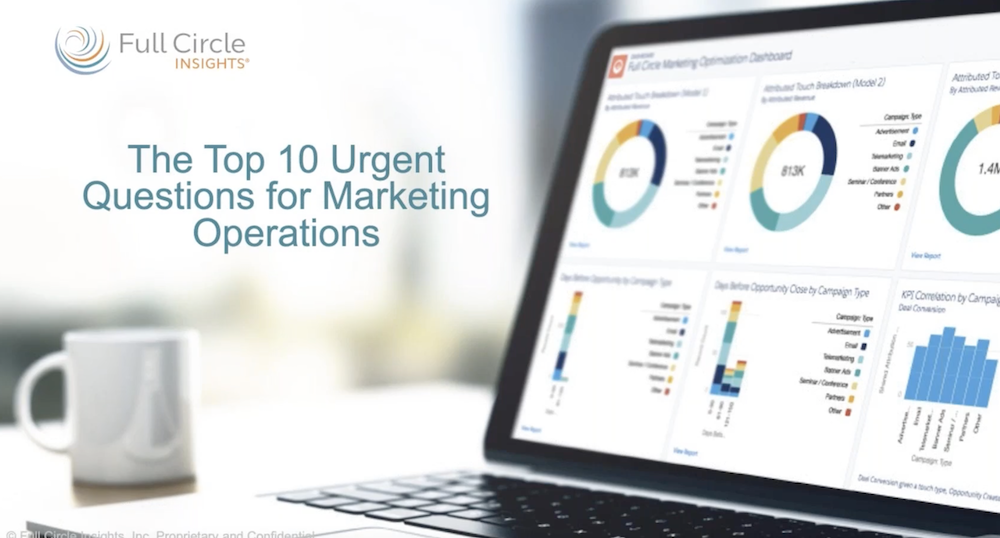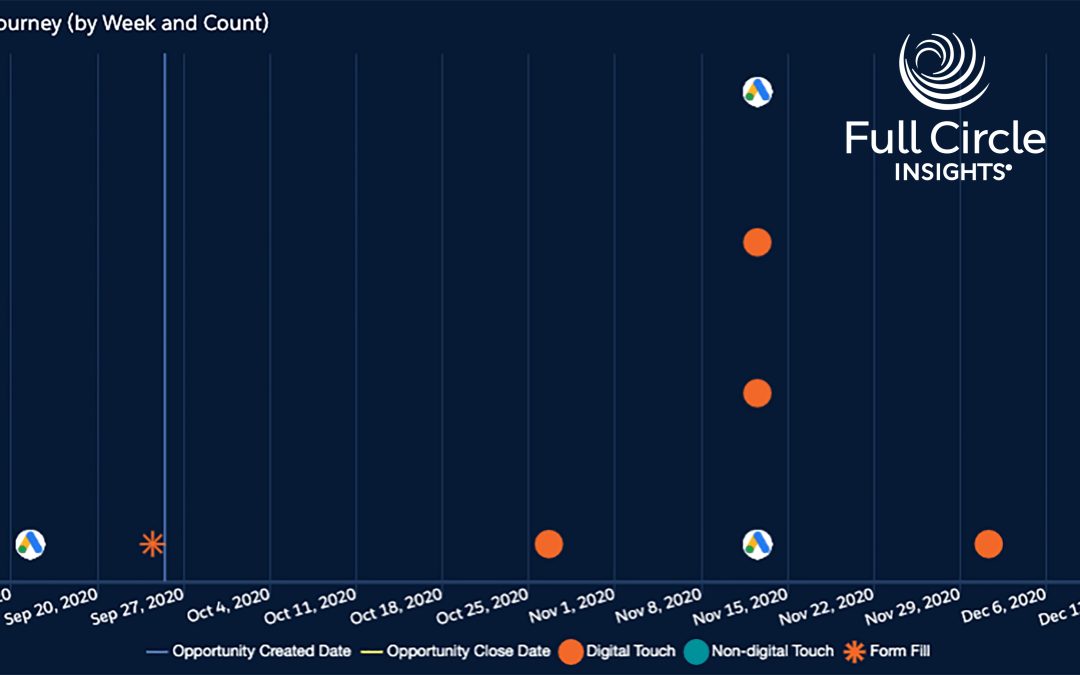
B2B marketers need to be able to figure out which campaign touches drive engagement and, ultimately, conversions and revenue. Attribution models can yield insights that allow marketers to make better spend allocation decisions. Single-touch attribution models like first-touch, last-touch and tipping-point can help marketers better understand lead generation, conversions, and the marketing-to-sales handoff.
Multitouch attribution can also generate important insights on how campaigns impact pipeline and revenue, but it’s critical to avoid mistakes during implantation and to understand the limitations and capabilities of each type of model. Here are five tips that can help you improve your multitouch attribution results.
- Create models that reflect your marketing strategy. It may sound simple, but it’s easy for marketers to get caught up in the different possibilities attribution models offer and miss this basic step. Are you running campaigns to improve the engagement of both new and active leads? If so, consider an even-spread multitouch attribution model that evaluates campaigns across the entire sales cycle. Are you looking to influence prospects later in the sales cycle? Take a look at a time decay attribution model, which gives later touches greater weight.
- Make you understand the business question you’re asking. In addition to aligning the model you choose with the marketing strategy, make sure you understand the business question you’re working to answer. For example, if one campaign strategy is to activate new influencers at top target companies, the business question might be, “What was the lead gen campaign’s impact on pipeline and sales this quarter vs. last quarter?” You’ll need to account for the business question too when setting up reports based on your multi-touch model.
- Apply appropriate reporting parameters. Once you have clarity on the business question you’re asking and choose a model that reflects the marketing strategy, it’s time to apply the right reporting parameters so that your dashboards and reports give you meaningful data. For instance, you might be examining results on a particular date, timeframe, or market segment. Setting the relevant parameters will ensure you get data that is actionable and relevant to the business question you’ve set out to answer with your campaign analysis.
- Combine attribution and funnel metrics to drive efficiency. This holds true for single-touch and multitouch attribution methods: Attribution helps you invest more efficiently, but you’ll also need funnel metrics to drive process efficiency. Also, keep in mind that it’s crucial to use CRM as your data repository because it is the revenue system of record. When you analyze funnel metrics inside the CRM, you can track volume, velocity, and conversion rates and identify any process issues with sales to drive overall efficiency.
- Hold regular meetings with sales and marketing colleagues. Related to the point above, it’s important to make sure everyone is on the same page, and that requires regular meetings with your relevant marketing ops/lead gen colleagues plus the sales/revenue teams that depend on your campaigns to generate business. During meetings, the group should review funnel metrics to identify trends and sticking points, and relevant individuals should take on action items to alleviate bottlenecks as appropriate.
Marketing attribution in general and multitouch attribution specifically will remain key components of B2B campaign measurement because they are essential for efficiency. Without actionable data on campaign performance, marketers can’t invest budget dollars where they produce the best results.
But it’s important to keep in mind that attribution is one-half of the efficiency equation. Funnel metrics matter too. When you can track both inside the CRM, you’ll be able to drive efficiency across the board and in even collaboration with your sales team.

Getting Buy-In for Agile Marketing
Agile marketing is having a moment. According to a recent AgileSherpas survey, more than half of all marketers report that they use at least some agile methodologies, with more than a third reporting that the pandemic accelerated their move to agile marketing....

Return of In-Person Event Metrics
For more than a year now, the pandemic has turned business operations upside down in countless ways. For B2B marketers, one of the most consequential disruptions was the inability to hold in-person events, which are often the top lead gen tool. But B2B...

10 Urgent Questions for Marketing Operations
As marketing operations professionals are increasingly playing a pivotal role in the success of B2B marketing it’s important to understand how MOPS can be successful in this increasingly complex role. So, what are the secrets to marketing operations success? And...

Post-Pandemic Ops: What to Keep & Change
About 150 million Americans have received at least one dose of the coronavirus vaccine, and more than 100 million are fully vaccinated, according to The Washington Post. There’s still much work to be done, but we’re on the path to a post-pandemic future. People...

Full Circle Insights Debut Journey Explorer
Unique Visualization Feature Maps Out Digital and Non-Digital Touchpoints Across Sources and Over Time, Showing Prospect Opportunities from Creation to Close SAN MATEO, Calif., May 11, 2021 — Full Circle Insights®, Inc., maker of comprehensive sales and marketing...

How to Avoid the Digital Transformation Trap
A Deloitte Insights report describes the economic effects of the pandemic as “a case of acute disruption,” noting that COVID-19 accelerated digital transformation as a matter of necessity. There have been many downstream effects, including widespread adoption...

What Moms Really Want for Mother’s Day: Equal Pay
While moms famously love a homemade card, freshly picked wildflowers and maybe breakfast in bed for Mother’s Day, what they really want is equal pay. Sadly, if things don’t change, it may take until my great granddaughters’ generation to achieve that in the U.S....

Customer Spotlight: Integrate
The share of marketers who report adopting an agile marketing approach has been growing, as we find that the pandemic accelerated implementation of agile techniques – with their budget-friendly and shorter project timelines. Agile methodologies are also centered...

Integrate Case Study
Integrate Uses Full Circle Insights to Defend Marketing Spend CHALLENGES The marketing team didn't have the right tools to measure campaign performance, lacked alignment with finance and sales, and needed insight into the business. SOLUTION Full Circle’s CRM-aligned...

Building Agility Throughout Your Martech Stack
As more marketing teams embrace agile methods, marketing leaders are increasing their focus on measurement out of necessity. One of the central tenets of an agile approach is frequent measurement so teams can quickly iterate or refine campaigns to improve performance...



